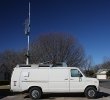|
I was pointing out that we do not have a setting in the BBHN GUI for changing the network port speed settings to lock them down, instead we stick with letting the device choose under Ethernet autonegotiation protocol (often cited as addendum 802.3u but now bundled into the official 802.3 spec's) When you hard code the speed on a device it (usually) disables autonegotiation of speed and duplex on that link Cisco confirms this is the case: http://www.cisco.com/c/en/us/support/docs/lan-switching/ethernet/10561-3.html "If you want to hard code the speed and duplex on a switch that runs Cisco IOS Software (turn off auto-negotiation), issue the speed and duplex commands underneath the specific interface. Duplex is subservient to speed in the sense that if speed is set to auto, then the duplex cannot be manually set." The Usual fallback I've seen in the 10/100 world was 10/Half (though I've sen some smart drivers upgrade the link to 100/half if they see 100mbhs traffic) When you get into gigabit it gets even stricter it seems (quoting same article)
"By default, all devices are supposed to perform autonegotiation. 802.3z does not specifically define a way to turn Autonegotiation off, for both 1GigabitEthernet and 10GigabitEthernet." You could hard program the speed into the back-end of the BBHN device and the operating system will honor it, its just we don't expose a hard interface config setting via the GUI (at this time). Same Article:
"Cisco recommends to leave auto-negotiation on for those devices compliant with 802.3u." Though despite that recommendation , like you, I have had portions of my network where I have hard coded link data. Though I have also have portions where I have hard coded, and it actually mucks things up (I had a buggy version of VMWARE ESX at one time that had issues where the interfaces woudl periodically reset itself to half duplex unless you left autonegotiation in place as one example)
So yes we will fully support 100mbps on 100mbps devices, its just we tend to let autonegotiation set the link speed rather then exposing a GUI setting where mistakes can be made.
|
